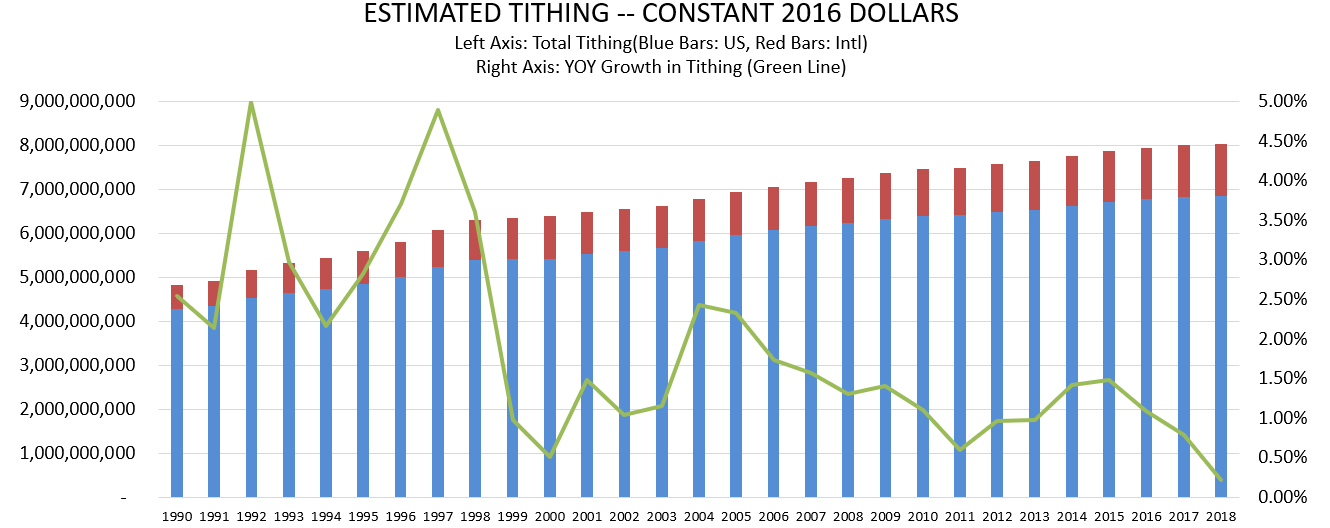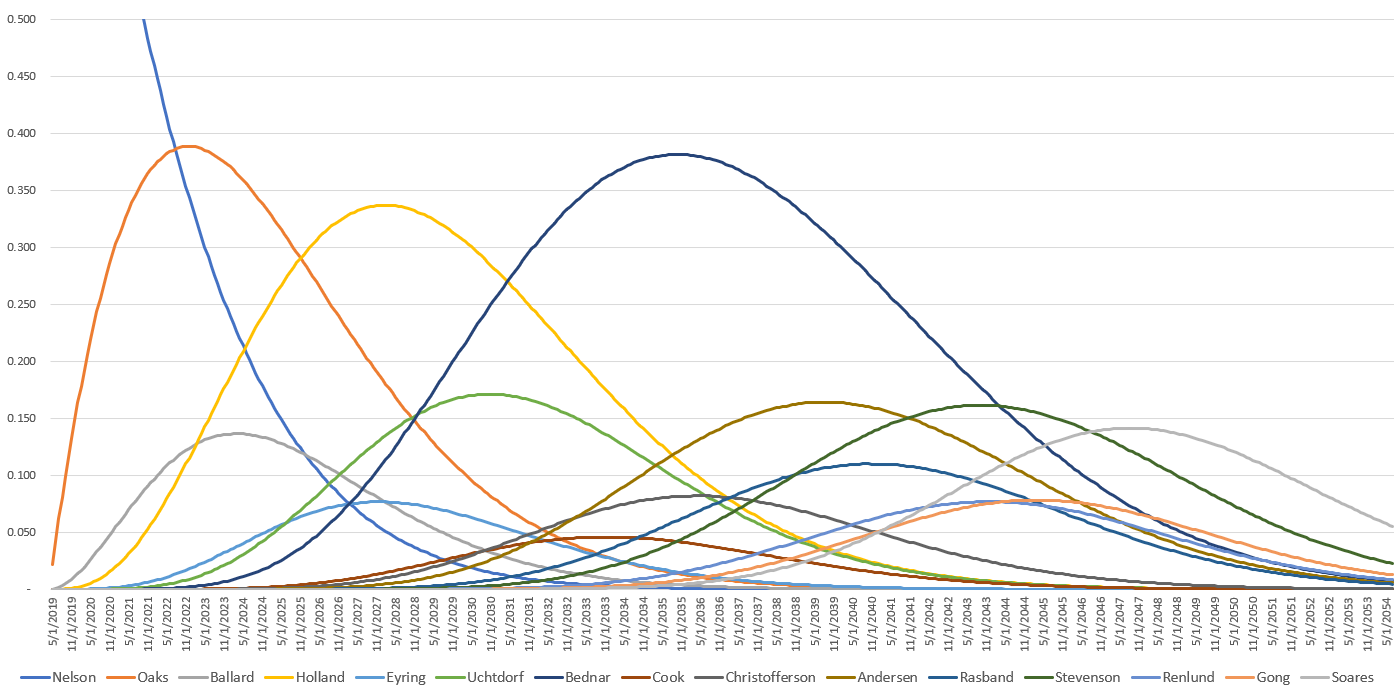LDS Membership Statistics 2019
Here are my charts for the LDS Membership Statistics Report, updated with the numbers reported April 6, 2019. These statistics are for calendar year 2018. See last year’s statistical report here.
Total membership: 16,313,735, raw growth of 1.21% on prior year
Stakes: 3,383
Wards and Branches: 30,536
New children of record during 2017: 102,102
Converts baptized during 2017: 234,332
Full-time Missionaries: 65,137

Total Units (Wards and Branches) was 30,536, just 30 more than last year, an increase of 0.10% from the previous year. This is a good indicator of growth in active members. There are new converts but also new people going inactive to offset some, but the increase in total wards and branches should be pretty close to a true growth indicator.

Stakes came in at 3,383. An increase of 1.26%.

This next chart is a fun one, which I’ve put some effort into modeling. I had been running my own Excel model predicting and forecasting inactivity/activity rates. I combined this model with two other models. One by Matt Martinich, the premier LDS membership data guru, who is involved with the popular church demographics site Cumorah.com and has a personal blog on LDS membership data. The other by Kimball who provides a lot of analysis at his site Fuller Consideration. All three models were pretty close, but I refined my model based on information from all, and I think I have a pretty good model now, which essentially categorizes US and International wards and branches and then allocates an average member size to each and floats with unit changes broken out by US-Intl. I get the following chart this year.
Total active members: 4,789,800 with increase of 0.40% over the previous year and overall activity at 29.4% down from 29.6% last year.

Missionaries are down to 65,137. This is down 2.9% from 2017. We know 2014 was a false peak because the age change caused missionaries from multiple age classes serving together, so we expected a decrease after that. It’s hard to know for sure, but I think most likely that has flushed out of the data, and the last couple years decline represent a true decrease in the number deciding to serve.

New converts were 234,332. Two years ago, the 240K number was the lowest number since 1987. Now, we have two years in a row that have sunk lower.

Next is total resignations. I am reporting 42,000 for 2018. This is very controversial and very difficult to model. The number is not reported directly. The number comes from total reduction in membership. Reduction in membership is calculated by taking change in membership less new converts less new children of record. The number this year was -140,868. This ‘plug’ number includes: deaths of members that are known, inactive members that can’t be located that reach age 110, children of record that turn age 9 and haven’t been baptized, excommunications, and resignations. This number of -141K is quite a jump from last year’s -105K, and the preceding four years with average of -108K and high of -122K. This caused me to go back and bump prior numbers up a little so smooth it out. I reported 22K resignations last year. I’m adjusting that to 31K.
Due to changes in methodology in the way the church reports, and also due to so many factors that go into modeling these five categories, it’s very difficult to peg this number accurately. I’m not sure if the peak 2014 and 2015 is meaningful or if it’s due to some change in membership accounting (probably the latter). The Church seems to occasionally do ‘true ups’ or or other strange things to the data, and since this is a plug, it all flows through to this number. Very volatile and likely inaccurate. But I’ve talked to the other data modelers and looked at various analysis and feel it’s about as good as we can guess.

Tithing. I estimate total tithing in 2018 at $8.3B. That’s an increase of just 0.21% using constant dollars on prior year. Almost flat.
I took a report from a study by Reuter’s in 2011, and modeled out estimated tithing dollars. That study estimated tithing dollars by USA and International. I trended it out using activity estimates. Something insightful here is to compare the blue-red USA-Intl split here to the total membership in the first chart. If these estimated numbers are correct, then it shows a major issue the church faces. I imagine the growth that is coming internationally in membership is quite a burden of expense, considering the tithing appears to be minimal, relatively.

Here’s the same look in current dollars.

Why is the Church’s growth slowing? Some will say it’s related to CES Letter type issues. But this seems to be a global issue affecting all churches. Church growth may be solid when compared to other churches struggling to grow in an increasingly secular world. I give my insight into some of the growth challenges in a previous essay titled Why are people leaving the Mormon Church?
Here’s one final chart for fun showing probabilities for the current apostles to ascend to become the prophet of the Church based on seniority. This chart is using actuarial chart published by US gov for death probabilities for certain age. If everything goes perfectly according to expectations, Pres. Nelson would be replaced by Oaks in 2022, then Holland in 2025, Bednar in 2031, Stevenson in 2044, and new apostle and possibly first international prophet Soares in 2046. Uchtdorf and Andersen also have pretty decent shots at becoming the prophet.
